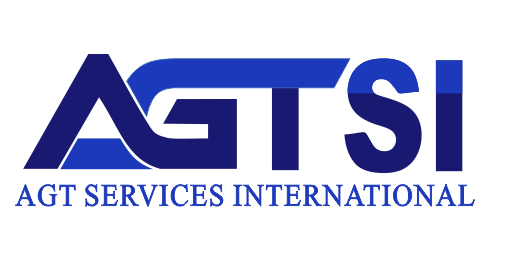In a growing business environment, organizations are constantly seeking innovative ways to recruit top talent efficiently and cost-effectively. Direct sourcing in recruiting has emerged as a well-planned strategy that allows companies to identify and engage independent contractors and skilled professionals directly, bypassing traditional third-party recruitment methods. This comprehensive guide explores the concept of direct sourcing in recruiting, its benefits, and practical strategies for implementation.
What is Direct Sourcing in Recruiting?
Direct sourcing is a recruitment strategy that allows organizations to directly identify and hire talent for specific roles or projects using their internal resources. This method involves using internal channels to source candidates, conducting recruiting and onboarding processes internally, and establishing direct communication with potential candidates. By using direct sourcing, companies have greater control over their hiring process, can build and maintain their talent pools, and improve their employer brand.
What is Advanced Direct Sourcing in Recruiting?
Advanced Direct Sourcing refers to a developed and strategic approach to access talent, explicitly focusing on finding and engaging top talent directly and efficiently. This method goes beyond traditional recruitment practices by using cutting-edge technology, data analytics, and specialized platforms to build talent communities, curate talent pools, access talent, and simplify the hiring process.
Direct Sourcing Platforms in Recruitment?
Here are some more features of direct sourcing platforms:
1. Beeline
Provides direct access to expanded pools of qualified talent from within your existing VMS. It integrates your private talent pool into the sourcing process, from requisition through settlement, with full compliance and data security.
2. LiveHire
It uses a branded talent cloud to attract temporary talent and offers talent-on-demand through its talent pooling and two-way text messaging functionality. Some say it’s an innovative technology leader with unmatched customer service and an intuitive UX/UI.
3. Jooble
Jooble is a global job search engine that connects job seekers with relevant job opportunities from various sources, including job boards, company career pages, and recruitment agencies. It provides a user-friendly interface for both job seekers and employers, making it easier to find and fill job vacancies.
4. Freelancer.com
Freelancer.com is a platform that connects businesses with freelancers across various industries. It allows employers to post projects or jobs, and freelancers can bid on those projects. This platform covers a wide range of skills and services, making it suitable for diverse hiring needs.
5. Upwork
Upwork is one of the largest freelancing platforms that connects businesses with freelancers and agencies offering a wide range of services. It allows employers to find, hire, collaborate, and pay freelancers for their work. Upwork offers tools for project management, communication, and payment processing to facilitate smooth collaborations.
6. Flexjobs
Flexjobs is a job board that specializes in remote and flexible job opportunities. It caters to professionals seeking part-time, freelance, remote, and flexible work arrangements. Employers can post job listings targeting candidates interested in flexible work options.
7. SimplyHired
SimplyHired is a job search engine that aggregates job listings from various sources, including job boards, company websites, and recruitment agencies. It provides job seekers with a comprehensive database of job opportunities across different industries and locations.
8. Guru
Guru is a freelance marketplace that connects businesses with freelancers offering services in various categories such as programming, design, writing, marketing, and more. It allows employers to find freelancers based on their skills, experience, and rates, facilitating efficient talent sourcing.
9. LinkedIn
LinkedIn is a professional networking platform that also offers recruitment solutions for businesses. It allows employers to post job openings, search for candidates, and engage with potential hires through networking and messaging features. LinkedIn is known for its extensive network of professionals and talent pools.
10. Behance
Behance is a platform for creative professionals to showcase their work, portfolios, and projects. Employers can browse through creative profiles to find talented designers, artists, photographers, and other creatives for freelance or full-time opportunities. Behance is particularly useful for hiring creative talent.
11. 99designs
99designs is a platform that specializes in graphic design services, including logo design, branding, web design, and more. Employers can launch design contests or hire individual designers based on their design needs and preferences. It’s a popular platform for businesses seeking high-quality design work.
12. Dribbble
Dribbble is a community and platform for designers, illustrators, and creatives to showcase their work, connect with peers, and find job opportunities. Employers can search for talented designers, view portfolios, and hire designers for freelance or full-time roles. Dribbble focuses on visual design and creative talent.
13. People Per Hour
People Per Hour is a freelance marketplace that connects businesses with freelancers offering services in categories like writing, design, marketing, development, and more. Employers can post job listings, receive proposals from freelancers, and collaborate on projects using the platform’s tools and features.
14. ServiceScape
ServiceScape is a platform that connects businesses with freelancers offering writing, editing, translation, and other professional services. It allows employers to find skilled freelancers, review their profiles and portfolios, and hire them for specific projects or ongoing work. ServiceScape emphasizes quality and expertise in service delivery.
Key Features and Components of Advanced Direct Sourcing include:
1. Technology Integration
Using advanced AI algorithms, machine learning models, and data analytics tools to automate candidate matching, improve sourcing accuracy, and improve overall recruitment efficiency.
2. Customized Talent Acquisition Platforms
Executing customized platforms or systems that cater to specific organizational needs, allowing smooth talent sourcing, onboarding, and management.
3. Personalized Engagement Strategies
Develop targeted and tailored approaches to attract, engage, and retain top talent, emphasizing the company’s unique value proposition and career opportunities.
4. Compliance and Risk Management
Focusing on following the law, keeping data safe, and reducing risks to make sure hiring is fair and clear, especially when working with independent contractors.
3. Continuous Improvement and Optimization
Adopting a data-driven approach to track key performance indicators (KPIs), gather insights, and refine recruitment strategies over time, leading to continuous improvement and optimization of talent acquisition processes.
4. Integration with Existing Workforce Management Systems
Smooth integration with existing HR and workforce management systems to simplify processes, improve collaboration, and improve overall organizational efficiency.
Why use Direct Sourcing?
Direct sourcing is a strategic approach to talent acquisition that offers several clear advantages for organizations. Here are some key reasons why businesses choose to use direct sourcing:
1. Cost Savings
Direct sourcing eliminates the need for third-party staffing agencies or recruiters, reducing costs associated with recruitment fees, markups, and commissions. This cost-effectiveness is especially beneficial for companies with high-volume hiring needs or regular turnover.
2. Access to Specialized Talent
By directly engaging with candidates, organizations can build and curate talent pools that align with their specific skill requirements, industry expertise, and cultural fit. This access to specialized talent ensures a higher quality of hires and enhances overall workforce capabilities.
3. Control and Flexibility
Direct sourcing gives companies greater control over the recruitment process, allowing them to tailor sourcing strategies, candidate engagement methods, and onboarding processes according to their unique needs and objectives. This flexibility enables organizations to adapt quickly to changing market conditions and talent demands.
4. Enhanced Employer Branding
Engaging candidates directly through personalized communication and branding initiatives helps organizations showcase their company culture, values, and career opportunities. This positive employer brand perception attracts top talent, improves candidate experience, and boosts employee retention rates.
5. Improved Time-to-Hire
Direct sourcing simplifies the hiring process by reducing intermediaries and bureaucratic delays often associated with traditional recruitment methods. This leads to faster time-to-hire, enabling companies to fill critical roles promptly and maintain business continuity.
6. Better Candidate Experience
Direct communication and engagement with candidates foster stronger relationships, transparency, and trust. Candidates appreciate the specialized approach, timely feedback, and clear expectations, resulting in a positive candidate experience and higher acceptance rates for job offers.
Ways to Direct Sourcing in Recruiting
Direct sourcing talent involves several strategic methods that organizations can implement to attract, engage, and hire top talent. Here are some effective ways to direct source talent:
1. Leverage Internal Networks
Managers and employees should be enabled to tap into their professional networks and referrals. Internal referrals often lead to high-quality candidates who are a good cultural fit and come with recommendations from trusted sources within the organization.
2. Utilize Online Marketplaces
Explore curated online platforms that connect businesses with independent contractors and freelancers. These marketplaces offer a wide range of talent across various industries, allowing organizations to find skilled professionals for specific projects or roles.
3. Engage with Freelance Management Systems (FMS)
Implement FMS platforms that provide end-to-end solutions for managing independent contractors. These systems not only offer access to talent pools but also simplify project posting, talent matching, onboarding, and invoicing processes.
4. Build Talent Networks
Create and promote talent communities or talent benches within your organization. These networks consist of pre-screened candidates, freelancers, and contractors who can be engaged for future projects or temporary assignments.
5. Utilize Social Media and Online Platforms
Utilize social media platforms like LinkedIn, professional networking sites, and industry-specific forums to showcase job opportunities, engage with potential candidates, and build relationships with hidden talent.
6. Attend Industry Events and Job Fairs
Participate in industry events, conferences, and job fairs to network with professionals, showcase your employer brand, and identify potential candidates who are actively seeking new opportunities.
7. Collaborate with Recruitment Agencies
Partner with specialized recruitment agencies or talent acquisition firms that have expertise in sourcing niche talent or hard-to-fill roles. These agencies can complement your direct sourcing efforts and provide access to a wider talent pool.
8. Offer Competitive Compensation and Benefits
To attract top talent, ensure that your payment packages, benefits, and bonuses are competitive and aligned with industry standards. Highlighting these offerings in job postings and communication with candidates can improve your attractiveness as an employer.
9. Emphasize Company Culture and Values
Communicate your company’s culture, values, mission, and vision effectively to candidates. Highlight what sets your organization apart and why it’s an attractive place to work, appealing to candidates who align with your company’s Principles.
10. Provide a Smooth Candidate Experience
Simplify your recruitment process, offer clear communication, provide timely feedback, and ensure a smooth, welcoming procedure for candidates. A positive candidate experience improves your employer’s brand and encourages candidates to accept job offers.
Here are Some Ways to Direct Source Talent:
1. Direct sourcing
Direct sourcing allows managers to find independent talent directly rather than through a third party. It can help companies remain compliant, manage independent contractor spending, and boost work efficiency.
2. Employee referrals
Employee referrals can lead to better quality hires, as the referring employee knows the candidate’s skills and fit for the organization.
3. Talent pool
It allows you to source directly from independent professionals already known to your organization, eliminating costly markups incurred when using third-party firms.
4. Job boards
Online platforms where employers post job openings. Large job boards such as Indeed, LinkedIn, and Glassdoor have a massive database of candidates who actively seek employment.
5. Talent communities
Based on talent, communities drive direct sourcing in today’s increasingly competitive landscape for contingent talent.
The Direct Sourcing Process in Recruiting
The direct sourcing process applies a series of steps designed to identify, engage, and hire top talent directly without relying on third-party intermediaries such as staffing agencies or recruiters. Here’s a detailed explanation of the direct sourcing process:
1. Identify Hiring Needs
The process begins with identifying the specific roles or skills your organization needs to fill. Hiring includes selecting the number of positions, required qualifications, experience levels, and any specialized skills or certifications needed.
2. Build Talent Profiles
Once the hiring needs are identified, create detailed talent profiles outlining the desired qualifications, experience, competencies, and cultural fit standards for each role. This will help you target the right candidates during the sourcing phase.
3. Source Candidates
Utilize different channels and methods to source candidates directly. Sourcing candidates includes utilizing internal networks, employee referrals, talent pools, online job boards, professional associations, university partnerships, and direct sourcing platforms.
4. Engage Potential Candidates
Once potential candidates are identified, engage with them through personalized communication channels. This may involve sending targeted emails, direct messages on social media, or phone calls to introduce your company, discuss job opportunities, and assess candidate interest.
5. Screen and Assess
Conduct thorough screening and assessment processes to evaluate candidate qualifications, skills, experience, and cultural fit. The method may include reviewing resumes, conducting interviews, conducting skills assessments, and checking references to ensure coordination with job requirements.
6. Offer and Negotiation
Extend job offers to selected candidates, outlining salary packages, benefits, and other terms of employment. Negotiate terms as needed to reach mutually agreeable agreements with candidates.
7. Onboarding and Integration
Facilitate a smooth onboarding process for hired candidates, providing necessary training, orientation, and introductions to the team and company culture. Ensure new hires have the tools, resources, and support needed to succeed in their roles.
8. Performance Monitoring
Continuously monitor and assess new hires’ performance to ensure they are meeting job expectations and contributing effectively to the organization. Provide feedback, coaching, and development opportunities as needed to support their growth and success.
9. Maintain Talent Relationships
Build and maintain ongoing relationships with talent, even after they are hired. This includes staying connected with talent communities and alums networks and nurturing relationships with potential future candidates for upcoming roles.
10. Review and Improve
Regularly review and evaluate the effectiveness of the direct sourcing process. Analyze metrics such as time-to-fill, cost-per-hire, candidate quality, retention rates, and candidate experience feedback. Use insights gained to make continuous improvements and optimizations to the direct sourcing strategy.
The Role of Technology in Direct Sourcing in Recruiting?
Technology plays a key role in facilitating direct sourcing initiatives. AI-powered recruitment tools, data analytics, and talent management platforms allow organizations to automate processes, improve candidate matching, and improve overall recruitment efficiency.
1. Ensuring Compliance and Risk Management
While direct sourcing offers multiple benefits, organizations must organize compliance and risk management. Implementing full contract management systems, legal frameworks, and commitment to labor regulations are essential to mitigate potential risks associated with independent contractor engagements.
2. Measuring Success and Continuous Improvement
Tracking key performance indicators (KPIs) such as time-to-hire, cost savings, talent retention rates, and candidate satisfaction is important for assessing the success of a direct sourcing program. Continuous feedback loops and data-driven insights enable organizations to refine their strategies and drive ongoing improvements in talent acquisition practices.
How can an Organization Benefit From Direct Sourcing?
Direct sourcing offers multiple benefits to organizations, providing a strategic advantage in talent acquisition and workforce management. Here are several ways in which an organization can benefit from direct sourcing:
1. Access to Quality Talent
Direct sourcing allows organizations to tap into a pool of high-quality talent directly without relying solely on third-party agencies. This access to talent can lead to faster hiring cycles and better matching with the organization’s specific needs and culture.
2. Cost Savings
Organizations can significantly reduce recruitment costs by stopping or reducing the use of third-party recruiters or staffing agencies. Direct sourcing minimizes or stops agency fees, markups, and other related expenses, leading to cost-effective hiring solutions.
3. Control Over Employer Branding
Direct sourcing empowers organizations to control and enhance their employer brand throughout the recruitment process. By directly engaging with candidates and showcasing the company’s values, culture, and opportunities, organizations can attract top talent who resonate with their brand.
4. Efficiency and Flexibility
The direct sourcing process is often more efficient and flexible compared to traditional recruitment methods. Organizations can tailor their sourcing strategies, screening processes, and candidate interactions to suit their unique hiring needs and timelines.
5. Reduced Time-to-Hire
Direct sourcing can lead to shorter time-to-hire cycles as organizations engage directly with candidates, streamline communication, and accelerate decision-making processes. This skill in hiring can be crucial, especially for filling critical roles quickly.
6. Improved Candidate Experience
Direct communication and engagement with candidates contribute to a positive candidate experience. Organizations can provide customized relations, transparent feedback, and a smooth onboarding experience, improving candidate satisfaction and conservation.
7. Enhanced Talent Pooling
Through direct sourcing efforts, organizations can build and maintain talent pools of qualified candidates for current and future hiring needs. This proactive approach ensures a continuous pipeline of skilled talent, reducing the time and effort spent on sourcing for each new role.
8. Better Cultural Fit
Direct sourcing allows organizations to assess candidates’ fit with the company’s culture, values, and goals early in the recruitment process. This focus on cultural fit can result in higher employee engagement, retention, and overall organizational success.
10. Agility in Skill Acquisition
In rapidly evolving industries or niche markets, direct sourcing allows organizations to develop specialized skills and expertise quickly. This skill in talent acquisition supports business growth, innovation, and competitive advantage.
11. Compliance and Risk Management
Direct sourcing can help organizations mitigate risks associated with misclassification, compliance, and legal issues often overlooked when working with third-party vendors. By managing the hiring process internally, organizations can ensure compliance with employment laws and regulations.
Direct Sourcing in Recruiting: Final Thoughts
Direct sourcing in recruiting represents a standard shift in talent acquisition, licensing organizations to proactively engage with top talent, reduce recruitment costs, and foster long-term relationships with independent professionals. By using technology, strategic partnerships, and a data-driven approach, companies can unlock the full potential of direct sourcing and gain a competitive edge in today’s dynamic workforce landscape.



















